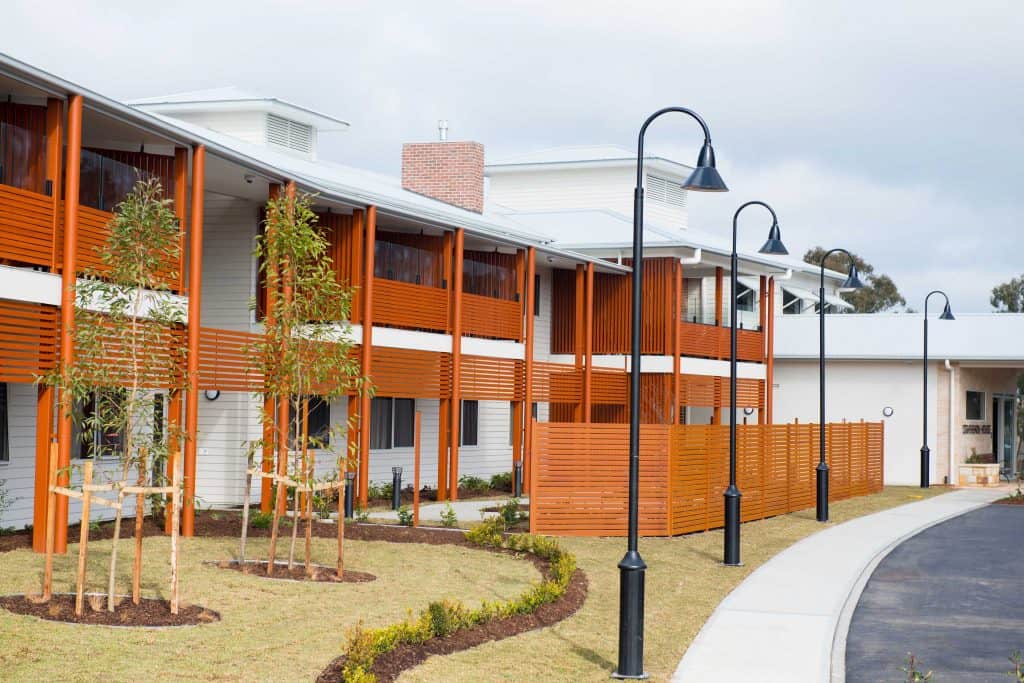
News
How dementia design principles are reshaping residential aged care
Millions of Australians are confronted by dementia, whether living with the disease, or seeking to offer support and care.
In 2021, there are up to 472,000 people currently living with the disease, with more than half of all people in residential aged care also affected.
And as our population ages, dementia is projected to more than double by 2058.
These findings have emerged from a benchmark study by the Australian Institute of Health and Welfare entitled the Dementia in Australia 2021 report.
According to the Minister for Senior Australians and Aged Care Services, Richard Colbeck, lifting the quality of dementia care is one of the ‘key drivers’ of the Federal Government’s $17.7 billion plan to reform aged care.
In this changing landscape, the small household model of accommodation has become a focal point of dementia-friendly design, following recommendations by the royal commission into aged care. In a sector moving towards greater specialisation, the model is poised to transform residential facilities.
Emerging trends
Matthew Greene is an architect with a thorough understanding of all aspects of construction. As Executive General Manager of Paynter Dixon, Matthew and the team are working closely with aged and health care providers to create specialist facilities of the future.
“We are seeing more providers integrate the small household model into their facilities,” says Matthew.
“Replicating the scale and intimacy of a home environment, the model is empowering residents with greater control over their daily routine.”
Typically, each house has its own kitchen, dining and living areas. Access to a covered outdoor area and secure courtyard are also considered good design elements.
“There is considerable evidence that the small household model promotes better health and wellbeing of residents,” says Matthew.
“Improved socialisation is a major benefit, encouraging residents to connect with others. In doing so, the likelihood of anxiety and depression is reduced.
“In light of COVID-19, the model is also effective at infection control, especially when outbreaks are presented.”
Intuitive design principles
Subtle but important design elements and finishes can enhance comfort for residents with dementia.
- Create sight lines to connect residents between rooms, including shared living areas. Dead-end corridors are to be avoided.
- Consider how materials and colours can influence behaviour. Residents with dementia can interpret contrasting floor colours as a void. Busy patterns on walls and floors may also create anxiety. On the other hand, residential ensuites can benefit from colour to provide visual cues, such as distinguishing toilet seats.
- Invoke a calm interior environment. Quality lighting, natural finishes and indoor plants can further replicate a familiar home environment.
- Carefully manage acoustics in larger shared areas. Sub-dividing areas can create a more intimate environment and reduce noise.
- Harness technology to help monitor and aid residents. This can help staff tailor their care plans.
Putting theory into practice

Paynter Dixon can see evidence of aged care providers customising the small household model, weighing up staffing ratios and other practical considerations. Providers are typically placing six-to-twelve residents per house.
The design and construction business is working closely with clients to ensure dementia design is guided by the client’s own ‘model of care’. As standard practice, the project team develops an acute understanding of how the client wishes to operate, tailoring the design solution in response to a range of considerations, including staffing levels, available space, and budget.
Strathearn Village in Scone (pictured above) is a prime example. Paynter Dixon was engaged to master plan an aged care precinct on an 8-hectare rural site in the Upper Hunter region. The master plan focused on an integrated model, including twelve 17-bed houses, retirement living childcare centre and wellness centre.
For another client, construction is about to commence on five houses of 12 residents in a two-storey building. Working on initial concepts, Paynter Dixon has worked with the client to ensure dementia design principles are embedded in the design.
Care in regional communities
The government has noted that regional and remote aged care providers across the country are closing at an alarming rate, with many experiencing financial hardship.
To address the issue, the government has ear-marked $370 million in funding for aged care providers to make improvements to their buildings and expand into underserviced areas.
“We encourage care providers in regional areas to seek expert advice,” says Matthew. “Our job is to partner with clients – and it all starts with a conversation.”
For further information, contact Brian Booth, Executive Design Manager, Paytner Dixon: brian.booth@paynterdixon.com.au
Categories
Related Articles
-
CODA tower crane dismantled
December 02, 2024
-
110 Year Anniversary: narrated history
November 14, 2024
-
110 Year Anniversary: future roads of innovation
October 21, 2024
-
110 Year Anniversary: James and Garry Boyd reflect on success
June 06, 2024
-
Empowering people and projects with standards
May 31, 2024